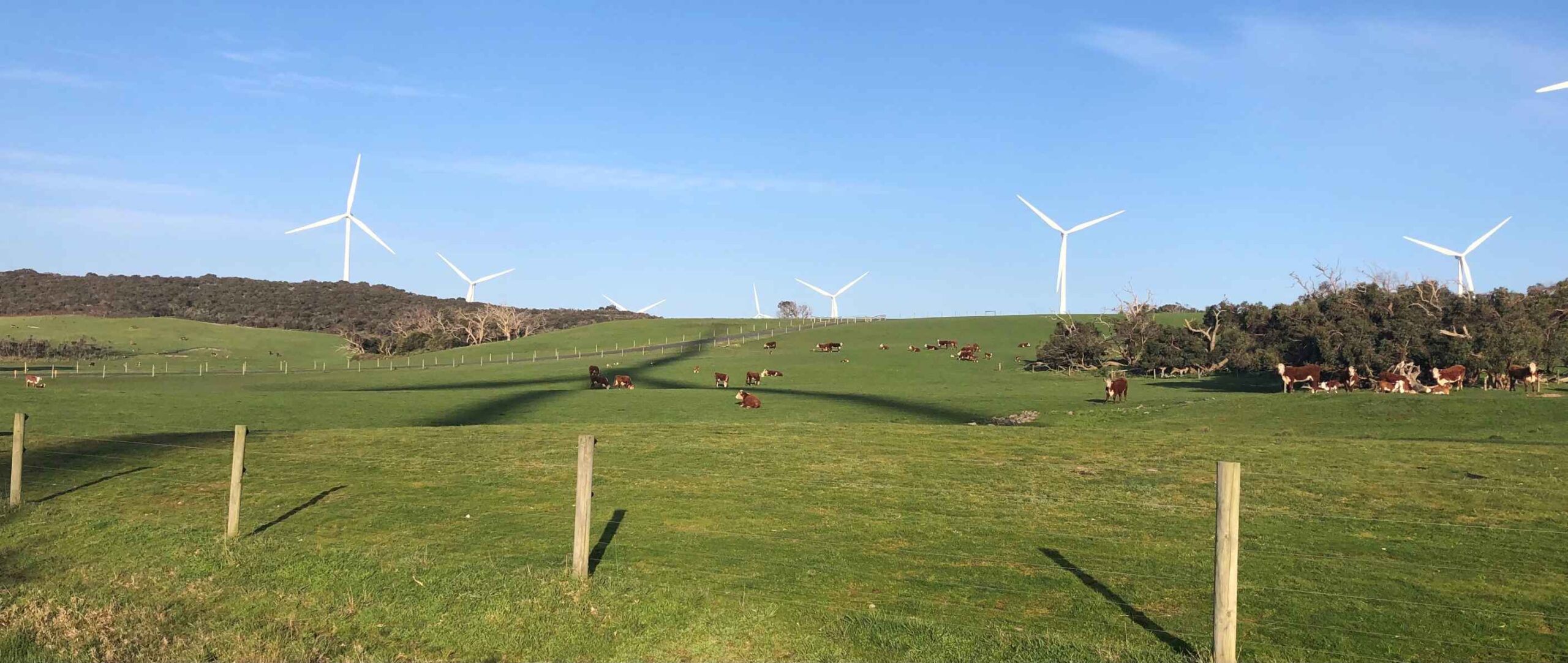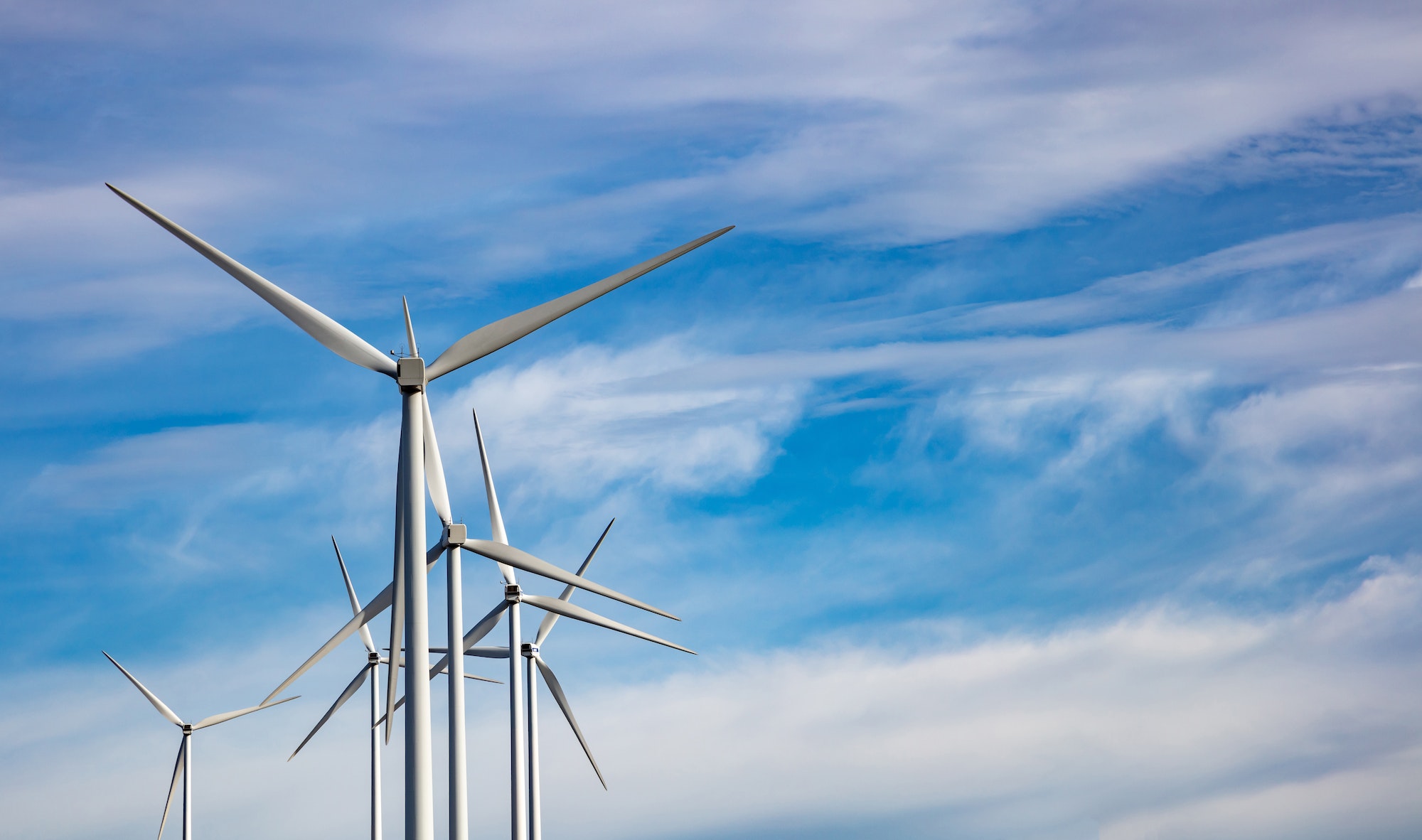

Wind power involves generating electricity from the natural element of wind. Wind turbines capture wind energy within the area that is swept by their blades. The spinning blades drive an electrical generator that produces electricity that is then exported to the grid.
Electricity is then transported through large transmissions lines to substations, and then onto homes, businesses and other infrastructure.
With technology advances, wind turbines are now larger and more efficient. Rotor diameters and hub heights have increased to capture more energy per turbine. This means that fewer turbines are needed to produce the same energy, and wind farms have become increasingly sophisticated.
While wind does not always blow and the sun does not always shine, wind and solar farms are connected to energy storage batteries to ensure a reliable supply of electricity is maintained.
All turbines operate using fundamentally the same principles – converting kinetic energy (energy from movement) into mechanical energy (movement of the blades/shaft) into electrical energy by using the spinning motion to generate a current of electrons using a coil of copper wire and magnets.
In traditional thermal generators, the movement is created by steam rising. In the case of wind turbines, the movement is created by harnessing the power of the wind.
Several life cycle assessments (LCA) which calculate the energy required to manufacture, install, operate and decommission a turbine as compared to the energy generated over its life, have been completed for modern wind turbines. The LCAs conclude that the energy payback period for a wind turbine is typically about 6 months of operation.
Learn more:
Currently our electricity network in Australia relies on coal generation to provide the baseload when other forms of energy generation are not contributing energy into the grid. However, renewable energy is providing more and more of our energy needs every year.
Using fossil fuels to produce power is not sustainable. Not only is there a limited supply, but the impact on health and the environment, particularly on climate change from the emission of greenhouse gases is well documented.
A combination of renewable energy from various diverse sources, such as solar, wind and hydro, along with battery storage, rooftop solar and an updated grid network will be enough to provide us with all our energy needs in the future. Technology is evolving all the time and new, more sustainable and versatile reliable forms of energy are coming onto the market.
The towers of wind turbines can be built from tubular steel or concrete with steel reinforcement. They are transported in sections and erected on site. Modern blades are typically made from carbon fibre and fibre glass.
The lifespan of a wind turbine is based on the materials and technology that have traditionally been used. However, it may change into the future. Towards the end of its life, the turbines will be assessed to determine whether they are still fit for use, or if they are able to be repowered (the turbine is replaced on the existing tower). If neither of these options are viable, the turbines are then decommissioned.
Planning permits for wind farms typically contain decommissioning requirements including such:
An agreement with the landowner requires the provision of a bond at least five years prior to the end of the site lease that covers the estimated costs to decommission the wind farm project.
Learn more: Wind turbine blades fully recyclable thanks to innovative technology.
Wind turbines are not fans. They use the force in the wind to turn the wind turbine rotor to generate electricity. They do not generate extra wind.
Wind turbines do produce turbulent airflow downwind of the wind turbine rotor which dissipates and is resolved into laminar airflow at a distance of approximately 16 rotor diameters away from the wind turbine. This turbulence is felt at heights similar to the wind turbine blades and not at ground level, where ambient conditions already have significant turbulence due to buildings, vegetation and landform.
A number of studies have been undertaken to determine whether or not wind turbines have an impact on climate. The most notable of these is a study by Lee Miller and David Keith from Harvard University, who used modelling to look at the potential impact of a theoretical wind farm large enough to power all the USA. Firstly, it’s important to recognise that there would never be a single wind farm of that size due to the need for diversification in the wind regime and energy sources, however, even at that scale, the potential impacts modelled were small and localised. The overall conclusion was that the impacts of climate change far outweigh the potential impacts of wind farms.
Further Reading
No, Wind Farms Are Not Causing Global Warming (Michael Marshall, Oct 2018)
Climatic Impacts of Wind Power (Lee Miller & David Keith, December 2018)
Wind farms located on agricultural land can have minor impact on the land use due to additional roading and hardstands (typically 2-4% of the land area); however, farms also benefit from improvements to vehicle mobility with road networks, fences, security, and weed management.
There is no credible evidence to support claims that wind turbines cause birth defects, impact livestock health or crop productivity.
Wind farms generally have a positive impact on tourism as people will come to the area to view the turbines. The Delburn Wind Farm will have a visitor information centre and a wind turbine walk as part of the project design to safely allow people to view and learn information about the project after is it constructed.
Infrasound is caused by movement. Wind turbines emit infrasound, however the levels of infrasound emitted by turbines is lower the levels emitted by many other commons sources (including the ocean and other man-made objects) and is at levels lower than can be perceived by the human body.
There is plenty of research on the impacts of infrasound on health and the impact of wind farms, and so far there is no consistent evidence that wind turbines impact health. The National Health Medical Research Council issued a revised statement on the 11 Feb 2015 after looking at over 4000 papers that “there is currently no consistent evidence that wind farms cause adverse health effects in humans”. Research in the area is on-going as the technology evolves.
More information: https://www.nhmrc.gov.au/health-advice/environmental-health/wind-farms
Don’t hesitate to contact us for more information about OSMI Australia and our work in the renewable energy sector.
OSMI Australia acknowledges the Traditional Owners and ongoing Custodians of the lands in which we operate. We pay our respects to Elders past, present and future.
We acknowledge the Gunaikurnai People as the traditional owners of the land that is now known as South Gippsland.